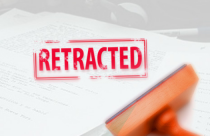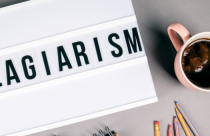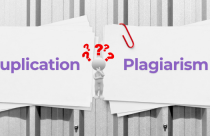Common Errors That Lead to Rejection (Part 2)

In our previous article, we discussed 6 errors that lead to rejection. Here we will look at 6 other easily avoidable reasons related to outright manuscript rejection at a broader level and how to avoid them.
1. Incorrect Journal Selection
We discussed the importance of selecting the correct journal and the best way to go about it. The most common reason for outright rejection is that the submitted manuscript is not within the scope of the journal.
For example, submissions to the Journal of Materials Chemistry will not be accepted for publication if they are outside of the scope of the journal, regardless of the quality or novelty of the science described.
An author wastes valuable publication time if he does not match the subject matter of his paper with the scope of the journal.
How to Avoid
- Carefully read the scope of the journals found on the Journal’s home page and the Instructions to Author’s section.
- Do a search for similar articles
2. Plagiarism or Self-plagiarism
Presenting someone else’s work as your own, from any source, is known as plagiarism. It is also defined as willful falsification of data, information, or citations in any formal academic exercise. Plagiarism is usually detected when the writing style used in submitted work is inconsistent. Electronic detection tools that identify text matches with other sources are also available. Plagiarism is considered as a serious offense in all circles.
What is Self-plagiarism?
Self-plagiarism, i.e., republication of one’s own work in another journal, without citing the original, is also a common reason for outright rejection.
How to Avoid
- Always acknowledge sources of ideas through proper referencing
- Avoid writing templates from paper to paper to save “writing” time
- Do not submit results that have been published before even in a lower-ranked journal
- Avoid paraphrasing. That is, taking the ideas of somebody else and expressing them with different words. You must make enough changes so that what you have written is distinctly different, and you must acknowledge your source.
- Use online plagiarism checker tools to identify plagiarized content and cite it thoroughly.
3. Insignificant or Inflated Findings
The primary criterion for acceptance of a paper for publication as an Original Research in a high-impact journal is that it must report high quality, novel work and make a significant contribution to its field. Papers reporting results regarded as routine or trivial are usually not accepted for publication. This means that no matter how competently the science reported has been carried out, publication will not be recommended by the referees if the work is considered routine or derivative or if it is unlikely to make a significant impact with the readership of the journal. Authors tend to report inflated results in order to get published. However, such tactics are usually caught at the time of peer review.
How to Avoid
- Be aware of your research topic and search for similar results before setting out to publish, and publish only “new findings” or “significant findings”
- If your research is novel, clearly highlight the novel properties or applications of the materials reported.
- Make comparisons with previous work in the field and that articles include a clear statement of the improvements made to justify publication.
- Avoid emphasis of statistical significance at the expense of clinical significance
- For insignificant results, choose lower-impact journals to avoid outright rejections
4. Ethical Concerns
Ethical concerns about the study are a common reason for outright rejection. Each author is expected to be responsible and adhere to the ethical guidelines laid down in their field of study. For example, violations or failure to highlight the following guidelines indicate misconduct:
- Human/Animal Welfare Problems: Treatment of experimental subjects that does not comply with accepted standards and journal policy; for example, lack of representative sample, absence of voluntary participation of study subjects, absence of approval of study by ethical review committee.
- Conflict of Interest: Real or perceived conflict due to employment, consulting, or investment in entities with an interest in the outcome of the research.
- Authorship Disputes: Disputes arising from the addition, deletion, or change of order of authors.
How to Avoid
- Adhere to scientific and writing ethics. Obtain prospective approval for the study protocol. Do not deviate from the protocol. Obtain approval for amendments as needed before altering the protocol.
- Indicate that the study had proper approvals. Disclose all potential conflicts to the Editor of the journal and within the manuscript itself.
- Agree on authorship before writing begins, preferably at the start of the study. Ensure that all authors meet criteria for authorship. Sign publisher authorship forms.
5. Instructions for Authors Not Followed
Failure to follow the Instructions for Authors can result in delays in the peer review of your work or outright rejection before peer review.
Journal editors have developed these instructions in order to process manuscripts easily and in a timely fashion. Publishers have certain fixed criteria for the type, length, format, and style of manuscripts to be accepted, and adhering to these instructions avoids unnecessary delays in the publication cycle.
How to Avoid
- Adhere to all the instructions on given by the journal. Typically, take a print out of the journal guidelines and highlight the key points that pertain to your submission.
- Incorporate all the points at the stage of writing.
- Prepare a checklist, and before submission, check that all the points have been completed.
- You can also hire a science editor to do this if you are short of time or do not understand the complicated instructions.
6. Technical Flaws
If your paper has one or two technical flaws then it is usually not rejected outright; however, if it has a large number of flaws then it is rejected. Common technical flaws are:
- A discrepancy between the Abstract and the manuscript
- Wrong groups are studied
- Wrong statistics (methods used, data analyzed, etc.) are used
- The results are statistically significant but not clinically significant
- The Discussion is not related to the results
- The data presented contradict each other
- Conclusions overstate the results and do not answer the study question
- Numbers presented in the tables or the text do not add up to what the author states they should
- English as a language barrier (poor writing, wrong spelling, wrong grammar, wrong tense, etc.)
How to Avoid
- All the authors should read the manuscript at least two times checking for inaccuracies and the above technical flaws.
- Before sending for publication, have a native-speaking colleague or science editor review your manuscript.
Although grammatical, typographical and spelling errors are usually corrected by copyeditors in the final version of accepted papers, your manuscript will not be corrected before it goes out for peer review. Therefore, to eliminate bias against non-native authors by peer-reviewers your final submission should be proofread before sending for review.










